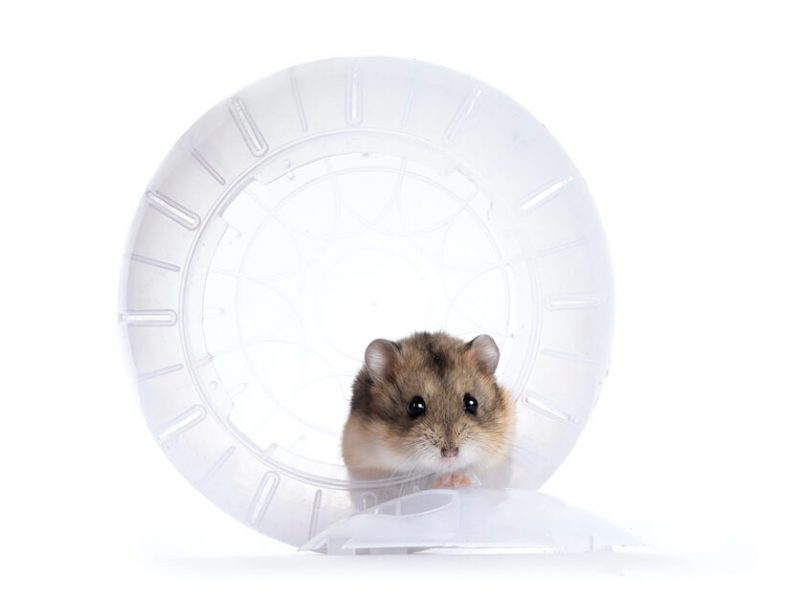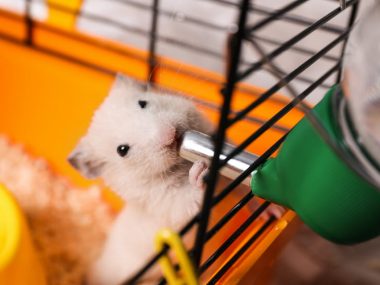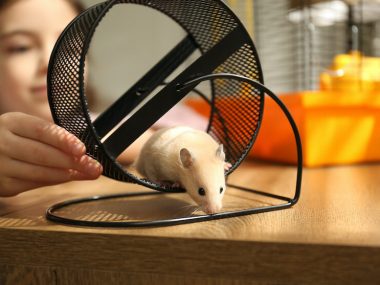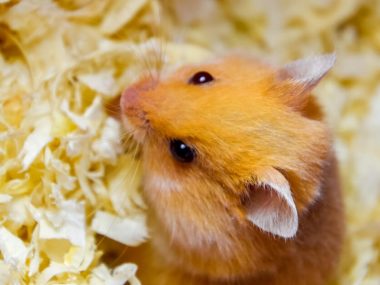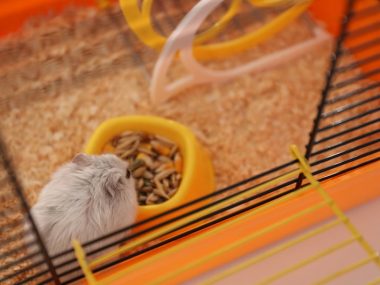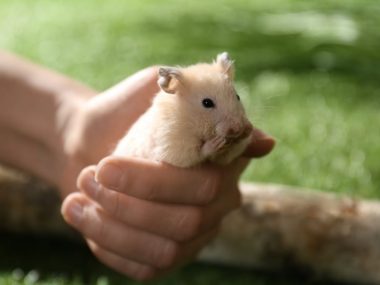The advent of the hamster ball brought about enthusiasm for hamster parents. Humans took this ball concept and rocked it further as a form of odd entertainment for themselves. However, just how much fun does a hamster have with one? Get all the deets from our new post.
What Is A Hamster Ball?
A hamster ball is a clear, hard plastic ball with a hollow interior. It’s this interior where we tuck our little hamsters into to run about in one of these. A removable portal door provides an entrance and exit for the hamster. Vent openings (usually slim, elongated openings) allow air into the ball.
The concept behind the invention of the hamster ball is to provide a way for a hamster to exercise while freely exploring an open environment outside of the confines of its cage. Just who invented this nifty little exploration vehicle for hamsters is unknown.
Table of Contents
The Need For Exercise: Hence The Wheel and Now The Ball
Hamsters are instinctively natural runners. In the wild, they travel miles every night in search of food to bring back to store in their underground mansions known as burrows. Our pet hamsters should realize that we provide them with plenty of food and not have to run around so much. But it doesn’t work that way because hamster’s exploratory tendencies are based on century-old instincts.
So, now that we know just how hyper our hamsters are, how do we satisfy their need to run? We must provide them with the means to exercise. Turning them out onto an open floor is a bad idea. Not only do they feel vulnerable, but they can also hide, chew on cords, or fall prey to another pet such as a cat or a dog. This is where a hamster wheel comes in.
Hamsters LOVE having a wheel in their cage. It’s the ideal way to run, burn energy, and have some fun. But what about hamster balls?
How To Find The Best Hamster Ball
Just like hamster wheels, there’s no “one-size-fits-all” hamster ball. A hamster ball should be selected according to the size of your hamster. The last thing we want to do is stuff our Syrian Teddy Bear hamster into a dwarf-sized hamster ball and vice versa. It’s like finding the right size shoe — it needs to fit.
Choosing A Hamster Ball
There are very few choices of hamster balls as far as the overall design goes. They are all pretty much made of the same thing, clear or fairly clear, hollow, round, and have a portal. However, sizing in hamster balls varies.
Size
Hamster balls come in some odd sizes. To make it less confusing about whether or not your hamster will fit into a 4.72” ball or 12 ½”, we have narrowed down the size of the ball according to the hamster species.
Just as sizing your hamster wheel to your hamster, it’s all in the arching of their back. Whether your hamster is on a wheel or in a ball, their backs should not be arched when running or walking. If it is, they need a bigger wheel/ball. Too big of a ball, and your hamster lacks maneuverability, causing the ball to move freely, picking up speed, and possibly harming your hamster.
Hamster Species and Ball Sizing
- Dwarfs (Roborovski, Djungarian, or Campbell): ideal wheel size is 6”
- Chinese: ideal wheel size is 7”
- Syrian (Golden, Teddy Bear): ideal wheel size is 10-11 ½ “
Budget
So, how much is a hamster ball going to cost? That depends on where you buy it from, the brand name, special features, and the overall quality. Hamster balls range between $7-$20 (USD.) The smaller the ball, the less it will cost.
Ease In Cleaning
Hamsters will relieve themselves anywhere, anytime. A hamster ball is not exempt from this happening while a hamster is inside the ball. Because of this, you’ll need to make sure that the ball is easy to clean before purchasing one. You are probably wondering about how to clean a hamster ball if your hamster does “go” while inside of it. Well, it’s quite simple, just use soap and water and wash, rinse, and dry before using again.
Types Of Hamster Balls
The hamster ball is fairly streamlined in design. However, there are a few features that set one apart from another. Is it best to pass on all of the “bells and whistles” when it comes to a hamster ball? Let’s look at what those “frilly foo-foo’s” are and see if they are a plus or negative.
There are only a few types of hamster balls:
- Colored
- Tracked
- Stationary Mounted
- Lighted
All hamster balls are made of durable plastic. For a more aesthetic appeal, some are colored/tinted. A few even come with lights that flash as the ball moves. For a more entertaining option, you can purchase train-like tracks to place your hamster ball on to guide the ball’s movement.
Pros of Purchasing a Plastic Hamster Ball
- Hamster balls are affordably priced and fit almost any budget.
- The hard, durable plastic is tough against wear and tear.
- Cleans up easily with soap and water.
- Most feature similar designs in vent openings and a portal opening that twists open and close.
- It comes in various sizes to fit the size of your hamster.
- Different color options are appealing.
Cons of Purchasing a Plastic Hamster Ball
- Noisy on hard floors.
- Some cheaper plastic hamster balls do not feature a smooth, seamless exterior. Jutting areas on the exterior make it difficult for the hamster to get around and may also scuff up the floor.
- The smaller balls may get caught underneath furniture.
- Over time, the plastic (exterior and interior) becomes cloudy and scratched from use and repeated cleanings.
- Colored/tinted balls are harder for the hamster to see through.
- It tends to fool a hamster parent into thinking supervision isn’t necessary.
- The hamster becomes overheated.
- Confining and doesn’t allow the hamster the option to get in or out on their own.
- Prevents access to water when thirsty.
- The hamster must track through fecal/urine residue inside the ball.
Are Balls Good For A Hamster?
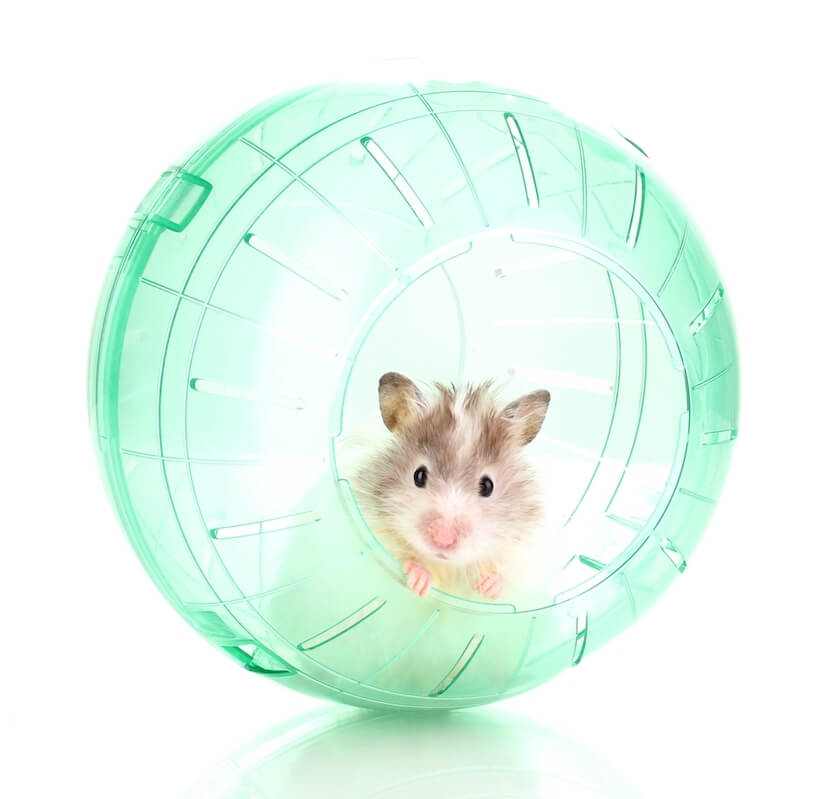
There is an ongoing debate about whether or not hamster balls are ethical to use with hamsters. So, are hamster balls safe to use or not? Overall, yes, mentally balls help hamsters exercise and explore new areas. However, excessive ball usage can lead to some health troubles.
Hidden Dangers Inside A Hamster Ball
When a hamster is placed into a hamster ball, it may experience physiological and psychological duress.
Physical
- Poor ventilation leads to overheating and difficulty breathing.
- Exposure to fecal/urine droppings while inside the ball.
- Distorted view of the outside because of distortion of spatial vision caused by the plastic.
- Their feet can easily get caught in the ventilation (slits) openings as the ball moves around.
- They cannot get a drink while in the ball.
- Environmental mishaps (stairs, etc.) can occur, causing injury or death.
Psychological
A published research study (A single gene defect causing claustrophobia) states that mice (which are close relatives of hamsters; hamsters belong to the rodent family) can have a defective gene responsible for claustrophobia. Should a hamster have this gene and find itself inside a hamster ball, it can succumb to significant stress.
Another published research article (Anxiety and Stress Models in Rodents) mentions how rodents (which include hamsters) become stressed when exposed to crowded/isolating environments.
Furthermore, additional data is found in a study (Environmental Enrichment for Laboratory Rodents and Rabbits: Requirements of Rodents, Rabbits, and Research) that notes rodents (which includes hamsters) do better with enriching vessels within the confines of their cage rather than outside of the cage. Perhaps this is why they take to the hamster wheel right off the bat.
How To Use A Hamster Ball
One would think that there’s only one way to use a hamster ball, right? Put the hamster in and let it go, not so because a responsible hamster parent does more than inserting a hamster and be done.
It should never be allowed to freely roam about while in the ball. Constant supervision is a must while your hamster is inside the ball. Ensure that the ball is on a flat surface away from stairs.
Is It Okay To Allow Your Hamster To Use Its Ball Outside?
Hamster balls quickly become overheated when outside in the sun or on a warm day. If you do opt to take your hamster ball with the hamster inside to the outdoors, it should be a cool day, out of the sun and under constant supervision. Keep in mind that birds of prey such as hawks will spot your hamster a mile away and may attempt to pick the ball up.
Do Hamsters Really Need Their Balls Every Day?
Usually not. If your hamster has a wheel inside its cage, it does not need a ball. A ball is just a fun extra accessory you might want to consider.
How Long Should A Hamster Be In A Ball?
Your hamster should never have more than 10 minutes inside a hamster ball, and that’s under ideal conditions. If the ambient temperature is warm, it’s best to avoid using the ball.
To Use Or Not Use?
Now you know a lot more than you did before about a hamster ball. Facing the challenging question of whether you should or should not use one comes down to a personal choice. However, most hamster parents who are aware of the downsides of a hamster ball choose to refrain from using one.
